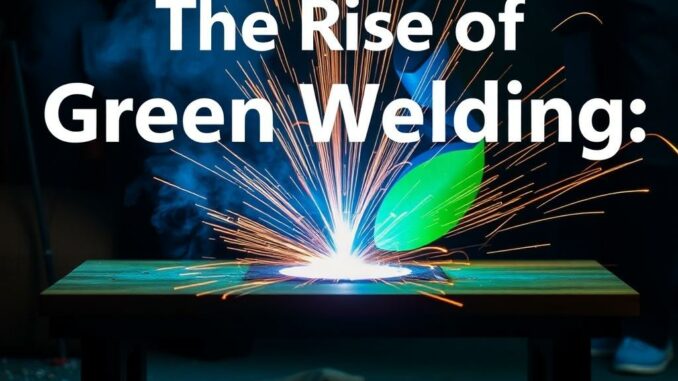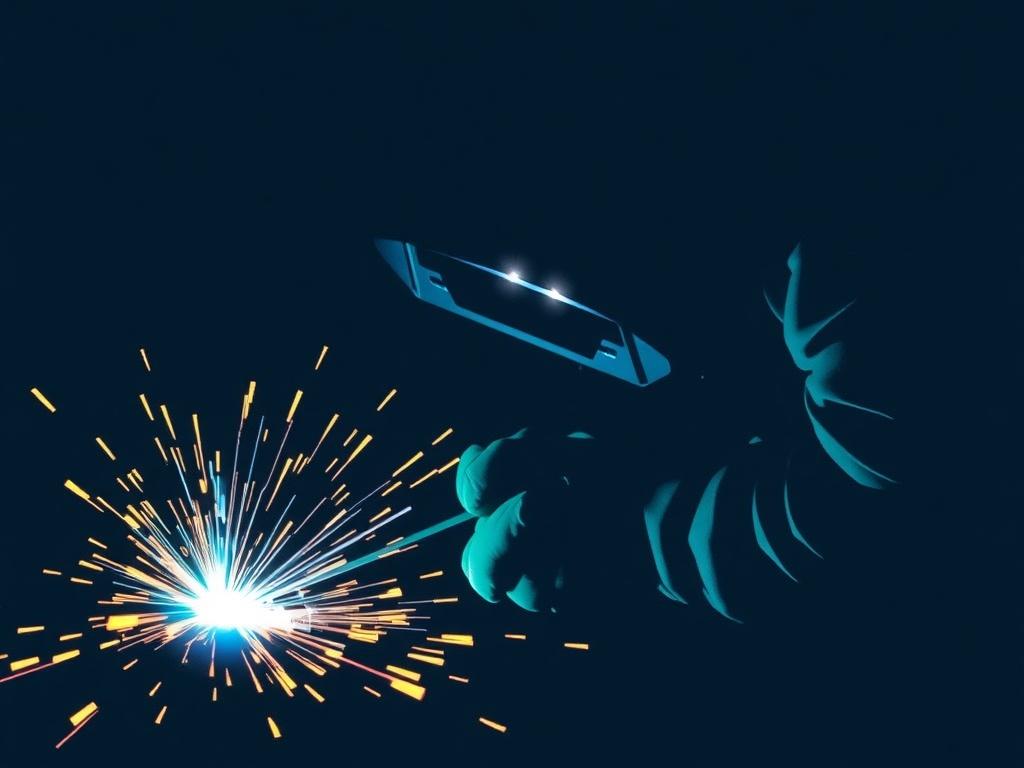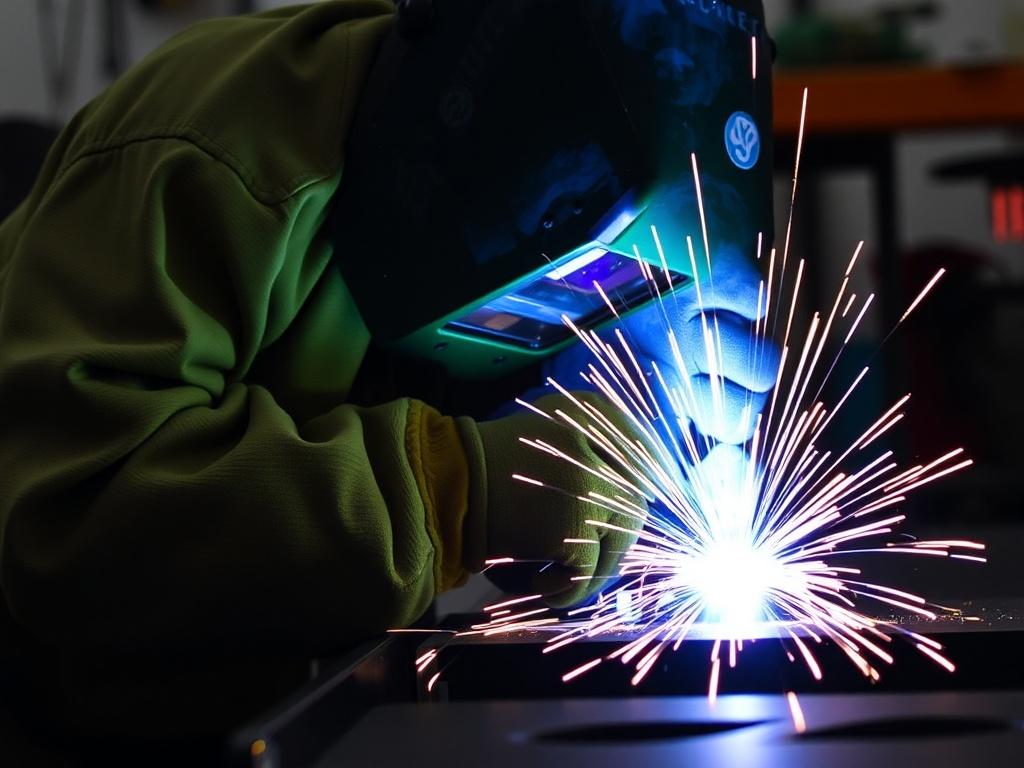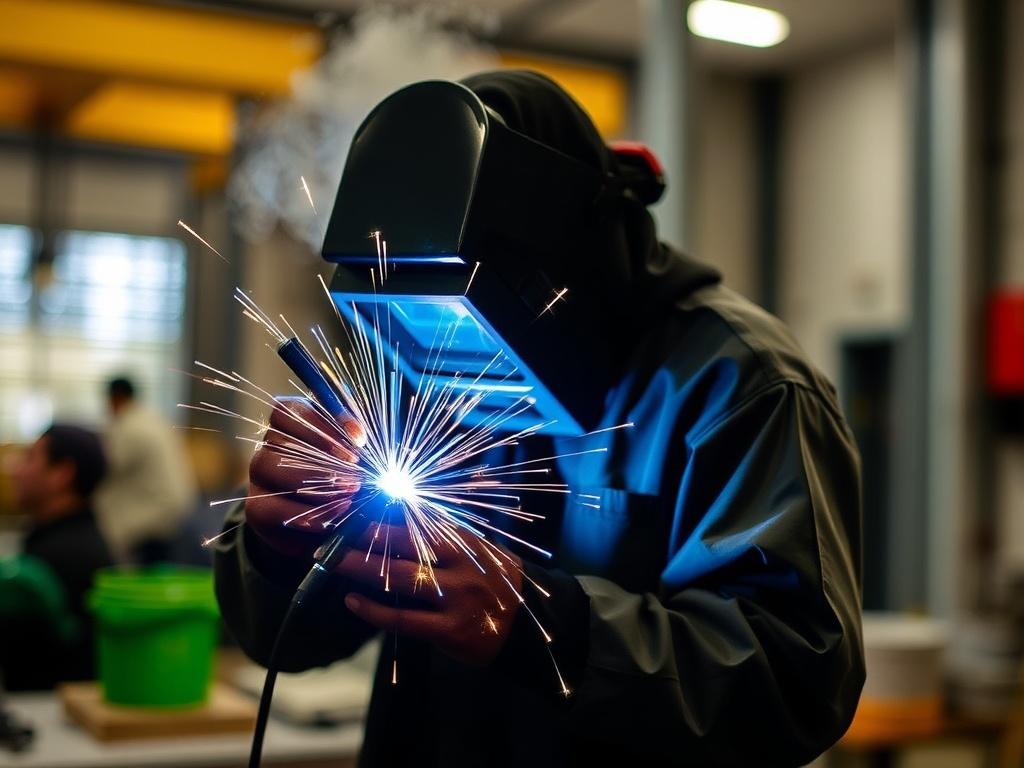
Welding is one of the cornerstones of modern industry, connecting countless structures, machines, and vehicles we rely on every day. However, traditional welding processes often come with environmental costs that are increasingly difficult to ignore. As the world embraces sustainability, green welding has emerged as a game-changer in the industrial landscape. But what exactly is green welding? How does it compare to traditional methods? And why is it gaining traction as an eco-friendly alternative? In this comprehensive guide, we’ll explore everything from the basics of welding to the innovative techniques that are making the craft greener and cleaner.
Understanding Welding: The Foundation of the Industry
Before diving into green welding, it’s essential to understand the fundamental principles behind welding itself. Welding refers to the process of joining two or more pieces of metal by melting the parts together to form a strong bond. This can involve a variety of methods, including arc welding, gas welding, and laser welding. Each process requires specific equipment and techniques to achieve the desired connection.
Traditionally, welding has been a high-energy, sometimes pollutive process. The heat created by welding not only demands significant power consumption but can also release harmful fumes and gases. Consumables like welding rods or gases often come in materials that aren’t environmentally friendly. This is where the idea of green welding steps in, aiming to reduce the harmful impact while preserving the integrity and strength of welded joints.
A Brief History of Welding
The art of welding dates back thousands of years, but modern welding techniques began advancing rapidly in the 19th and 20th centuries. Early arc welding, for example, was developed in the late 1800s, offering a much more efficient way to join metals. Over time, innovations led to the creation of shielded metal arc welding (SMAW), gas metal arc welding (GMAW), and other methods that increased speed and precision.
However, as industrial development surged, so did environmental challenges. The release of hazardous fumes, high energy consumption, and use of non-recyclable materials raised questions about sustainability. In response, researchers and practitioners began exploring ways to make welding processes greener, setting the stage for the modern movement toward eco-friendly techniques.
What is Green Welding?
Green welding is more than just a buzzword. It refers to a set of practices and technologies designed to minimize the environmental footprint of welding operations. This includes reducing energy consumption, lowering emissions, using sustainable consumables, improving waste management, and adopting safer working practices for welders and the environment alike.
One of the driving forces behind green welding is the global emphasis on sustainability and reducing industrial pollution. Governments and environmental agencies worldwide are implementing stricter regulations on emissions and waste management, making green welding not just an ethical choice but increasingly a legal requirement.
The Goals of Green Welding
- Reduce Energy Use: Applying more efficient power sources and processes to decrease electricity consumption without compromising weld quality.
- Minimize Harmful Emissions: Limiting the release of toxic gases and fumes through better ventilation, alternative shielding gases, and cleaner power sources.
- Use Environmentally Friendly Materials: Sourcing consumables that are recyclable, biodegradable, or sourced sustainably to cut down on waste.
- Improve Waste Management: Proper disposal and recycling of welding byproducts, scrap metal, and contaminated materials.
- Enhance Worker Safety: Utilizing protective equipment and safer techniques to reduce the exposure of welders to harmful substances.
Key Eco-Friendly Welding Techniques
Now that we’ve established what green welding aims for, let’s explore some of the most prominent techniques and innovations advancing this eco-friendly revolution.
1. Laser Welding
Laser welding is a high-precision process that uses a concentrated beam of light to melt and fuse metals. One of the major advantages of laser welding in the green context is its efficiency.
Since this technique concentrates energy only at the weld zone, it minimizes heat wastage, reducing overall energy consumption. Additionally, it generates less smoke and fumes because of the localized heating, thereby lowering environmental pollutants.
This technique is especially popular in industries requiring highly accurate welds on thin materials such as automotive manufacturing or electronics, where reducing material waste is crucial.
2. Friction Stir Welding (FSW)
Friction stir welding is a solid-state joining process that uses a non-consumable rotating tool to generate frictional heat, which softens the materials without melting them. This results in a very clean weld with minimal distortion.
From a sustainability perspective, FSW requires far less energy compared to traditional arc welding, and eliminates the need for filler materials and shielding gases, which often have environmental costs. Moreover, the process produces little to no harmful fumes, making it a preferable option in eco-conscious facilities.
3. Cold Metal Transfer (CMT)
Cold Metal Transfer welding is an updated version of gas metal arc welding that carefully controls heat input to create excellent quality welds with minimal spatter and distortion. By significantly reducing the heat applied, CMT consumes less energy and produces less welding smoke and fumes.
Another advantage of CMT technology is its compatibility with automation, meaning less waste from human error and an overall more efficient manufacturing environment.
4. Use of Eco-Friendly Shielding Gases
Shielding gases are crucial in protecting the molten metal from contamination during welding. Historically, gases like argon and carbon dioxide have been used, but many contain high global warming potential (GWP) or contribute indirectly to climate change.
New advancements have introduced alternative, lower-impact gases, such as mixtures with helium or nitrogen, or the development of non-toxic shielding gases that reduce greenhouse gas emissions. These alternatives maintain weld quality while making the process greener.
5. Hybrid Welding Processes
Combining different welding methods can also contribute to sustainability. Hybrid welding, such as combining laser welding with arc welding, maximizes the benefits of each—for example, deep penetration with laser and superior gap tolerance with arc welding.
This combination can reduce the total heat input, improve weld speed, and minimize energy consumption, providing excellent weld properties with environmental benefits.
The Environmental Impact of Traditional Welding
While green welding techniques are exciting and promising, it’s important to understand what we’re moving away from. Traditional welding can have significant environmental and health impacts if not managed properly.
Emission of Toxic Fumes and Gases
Many welding operations emit fumes containing heavy metals such as manganese, chromium, and nickel, as well as gases like ozone and nitrogen oxides. These emissions not only affect the environment by contributing to air pollution but also pose serious health hazards for welders and nearby workers.
High Energy Consumption
The electrical energy required for welding—especially processes like shielded metal arc welding (SMAW) or submerged arc welding (SAW)—can be substantial. This often relies on fossil fuel-generated electricity, adding to the process’s carbon footprint.
Waste Generation
Welding results in various wastes, including scrap metal, spent electrodes, and contaminated materials such as rags and solvents used in cleaning. Improper disposal of these wastes leads to soil and water pollution.
Benefits of Adopting Green Welding Techniques

Transitioning to green welding practices isn’t only about compliance and environmental responsibility—it offers tangible benefits that industries can leverage for efficiency, safety, and long-term sustainability.
Lower Operating Costs
While the initial investment in eco-friendly welding equipment or processes may be higher, operational savings quickly offset this. Energy-efficient techniques reduce electricity costs, and better material usage means less waste and lower purchasing expenses for consumables.
Improved Worker Health and Safety
Reducing harmful emissions and fumes leads to a safer working environment. Improved ventilation and cleaner processes also mean less risk for respiratory illnesses and other occupational hazards.
Compliance and Reputation
Governments worldwide are cracking down on industrial emissions and waste. Companies that adopt green welding practices ensure compliance with regulations and avoid penalties. Moreover, environmentally conscious consumers and partners prefer working with companies that prioritize sustainability, improving brand reputation.
Higher Quality and Precision
Many green welding techniques, such as laser welding or friction stir welding, improve weld quality and consistency. Better quality welding means longer-lasting products and fewer returns or repairs.
Challenges and Future Directions in Green Welding

Despite these advantages, green welding faces several challenges that must be addressed to achieve widespread adoption.
Initial Investment and Training
Eco-friendly welding equipment often requires significant upfront investment and worker training. Smaller workshops, in particular, may struggle to implement these changes without financial assistance or subsidies.
Material Limitations
Some green welding techniques may not yet be suitable for all materials or thicknesses. Research is ongoing to expand the capabilities of these processes to cover a wider range of industrial applications.
Technological Development Needed
Further innovation is needed to continue reducing energy consumption and emissions while improving welding speed and quality. Advances in automation and AI integration could play a key role in optimizing green welding processes.
Table: Comparing Traditional and Green Welding Techniques
| Aspect | Traditional Welding | Green Welding |
|---|---|---|
| Energy Consumption | High | Lower, more efficient techniques |
| Emission of Pollutants | Significant fumes and gases | Reduced toxic emissions and fumes |
| Material Use | Conventional consumables, often non-recyclable | Eco-friendly, recyclable consumables |
| Worker Safety | Exposure to hazardous substances | Minimized risk through cleaner processes |
| Initial Cost | Lower equipment cost | Higher, but offset by operational savings |
| Weld Quality | Varies, often less precise | High precision, minimal defects |
How Businesses Can Transition to Green Welding
For companies keen to embrace green welding techniques, the transition involves planning, investment, training, and continuous improvement.
Step 1: Conduct an Environmental Audit
Understanding current environmental impacts of welding operations is vital. Identifying high-energy processes, emissions, and waste helps prioritize areas for improvement.
Step 2: Research and Invest in Green Technologies
Work with equipment manufacturers to explore available green welding technologies that fit your application. Consider government incentives or subsidies for environmentally friendly upgrades.
Step 3: Implement Worker Training Programs
Educate welders on new processes, safety practices, and environmental goals. Skilled operators maximize the benefits of green welding techniques.
Step 4: Monitor and Optimize
Track energy usage, waste, and emissions regularly. Use this data to refine procedures and maintain compliance while optimizing efficiency.
Conclusion: Embracing a Sustainable Future with Green Welding

The rise of green welding represents a critical shift in how industries approach fabrication and assembly. Through innovative techniques, eco-friendly consumables, and a commitment to reducing environmental impacts, welding can become a model of sustainability in manufacturing. While challenges remain, the benefits—ranging from cost savings to improved worker safety and regulatory compliance—make green welding an investment worth making.
By adopting green welding, businesses not only contribute to protecting the planet but also align with the growing demand for responsible production. It’s an exciting transformation transforming a traditional skill into a tool for a cleaner, greener tomorrow.
Whether you’re a welder, equipment manufacturer, or industry leader, understanding and embracing these eco-friendly techniques will be key to thriving in the evolving industrial world. The arc is shifting—in a way that’s truly illuminating for the environment.
